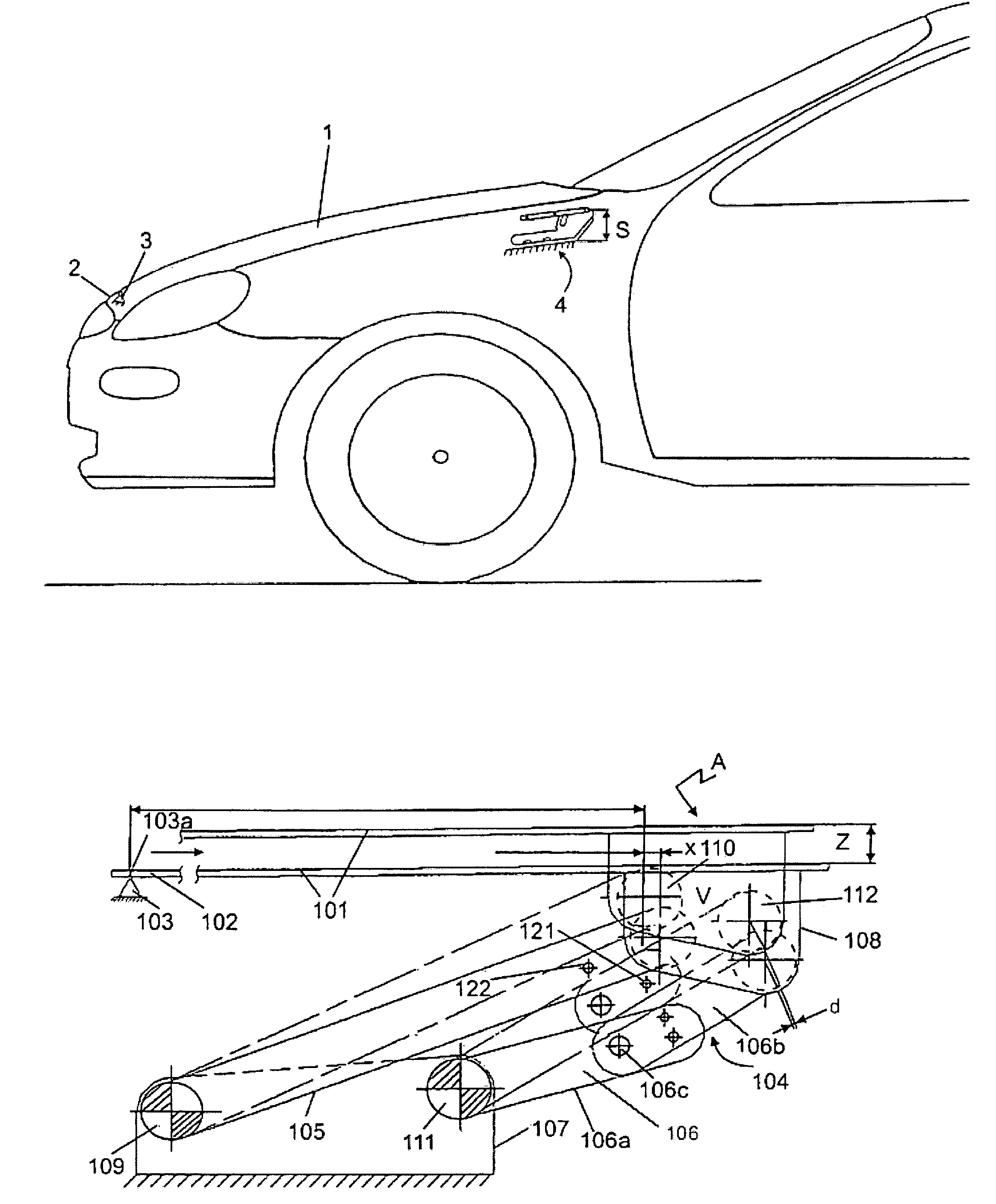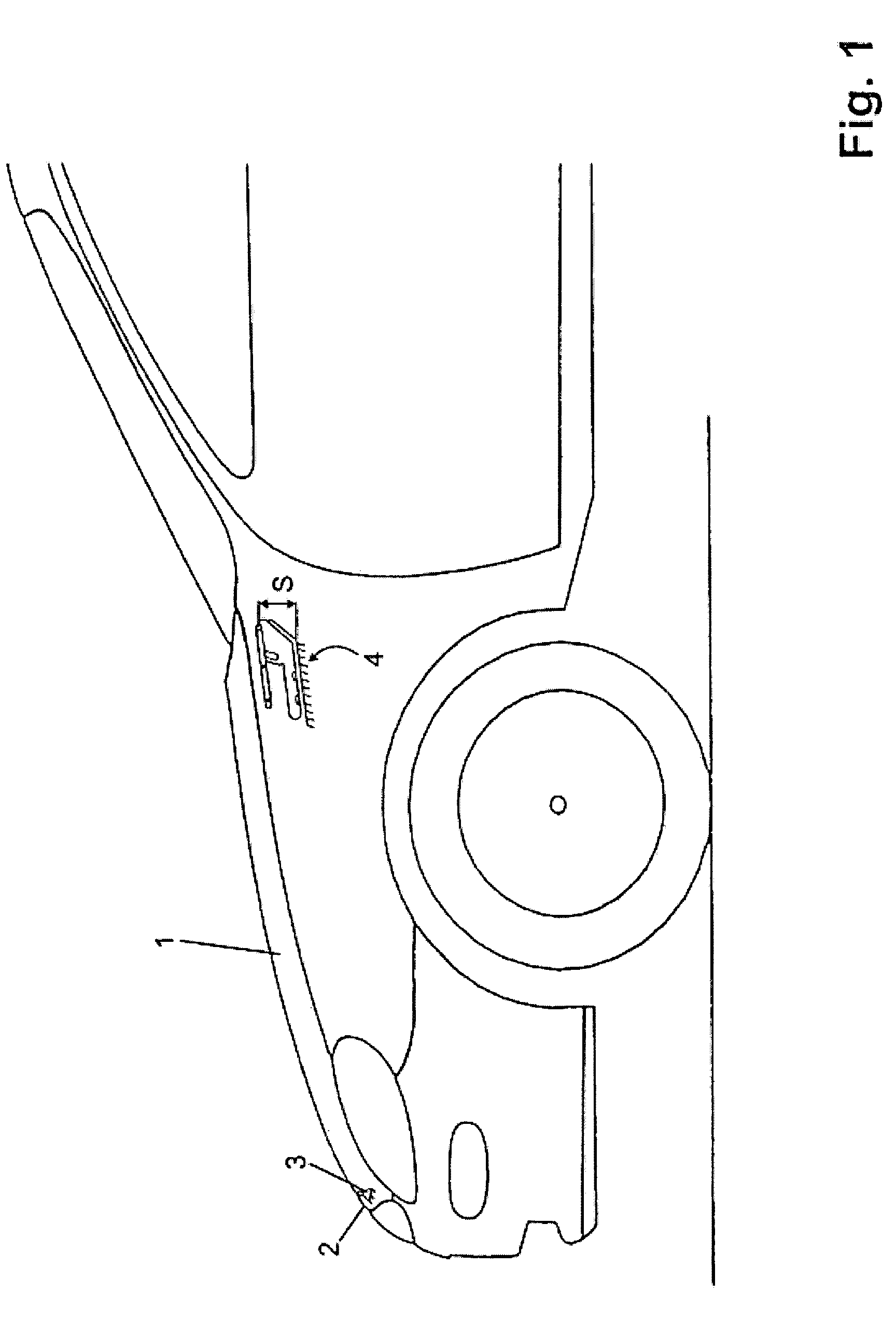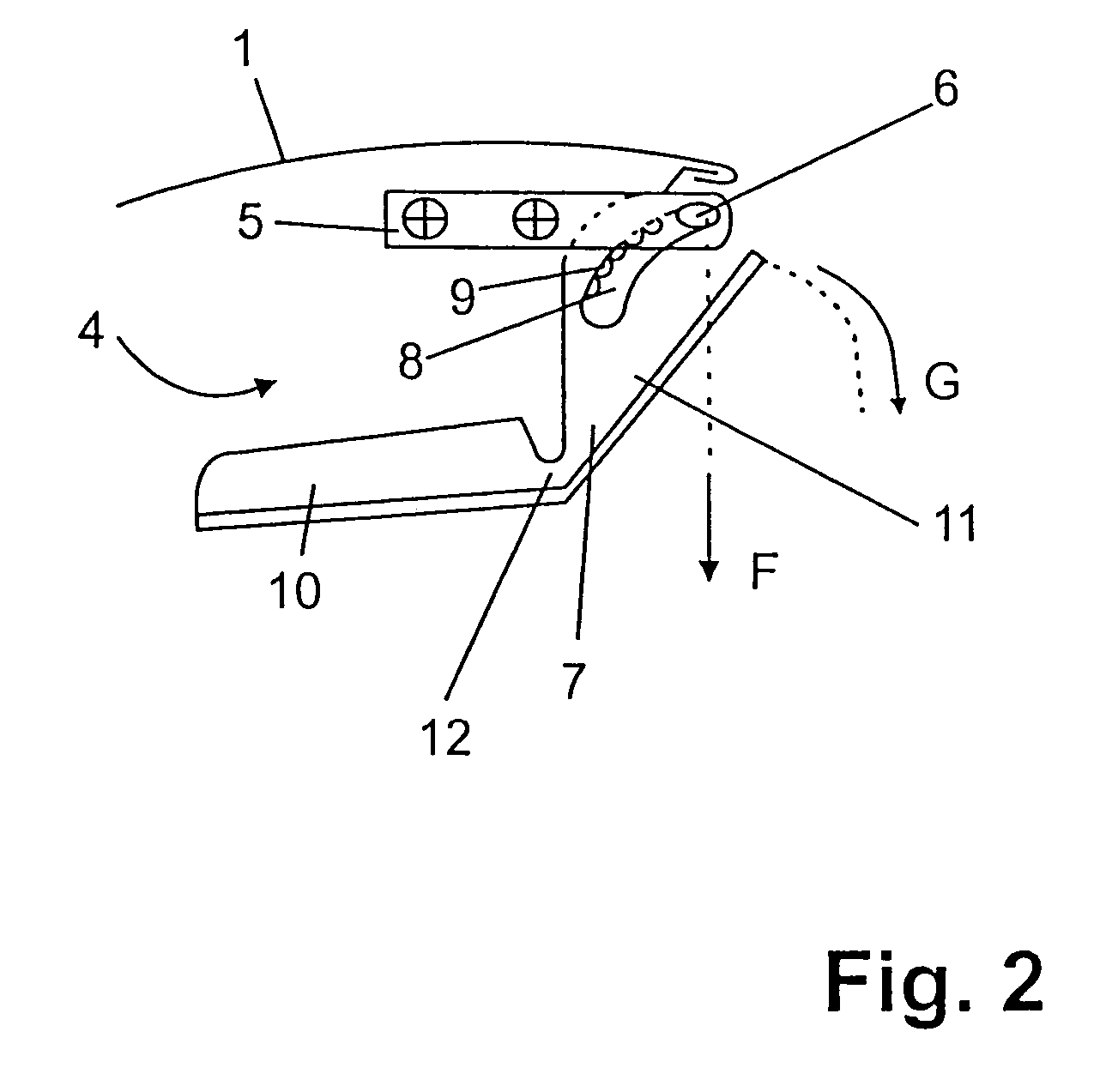Front hood assembly
a front hood and assembly technology, applied in the direction of roofs, pedestrian/occupant safety arrangements, tractors, etc., can solve the problems of inability to deform, speeding up accidents involving pedestrians at up to 60 km/h, and scarcely implementing protection measures in practice. achieve the effect of inexpensive and industrial scal
- Summary
- Abstract
- Description
- Claims
- Application Information
AI Technical Summary
Benefits of technology
Problems solved by technology
Method used
Image
Examples
Embodiment Construction
[0035]The front part of a motor vehicle, which is illustrated in FIG. 1, comprises a front hood 1, which at its front end 2 can be locked by means of a hood lock 3 and at its rear end, in each case on the outside, is connected to in each case one frame side member of the motor vehicle via one of two hinges 4. The hinge 4 has a first limb 5 which is rigidly connected to the front hood 1 by a screw connection or a riveted connection and the link 6 of which, in the operating state, forms the rotation point of the engine hood 1 when the hood lock 3 is unlocked. The link 6 is secured in a holder 7 attached to the body, a curved guide 8, the catches 9 of which are able to hold the pin which defines the link 6 in a decelerating or clamping manner, being formed in the holder 7. The holder 7 attached to the body comprises a substantially horizontal limb 10 and a limb 11 which is formed substantially at a 45° angle and in the form of a plate and in which the guide 8 is cut out approximately i...
PUM
 Login to View More
Login to View More Abstract
Description
Claims
Application Information
 Login to View More
Login to View More - R&D
- Intellectual Property
- Life Sciences
- Materials
- Tech Scout
- Unparalleled Data Quality
- Higher Quality Content
- 60% Fewer Hallucinations
Browse by: Latest US Patents, China's latest patents, Technical Efficacy Thesaurus, Application Domain, Technology Topic, Popular Technical Reports.
© 2025 PatSnap. All rights reserved.Legal|Privacy policy|Modern Slavery Act Transparency Statement|Sitemap|About US| Contact US: help@patsnap.com



